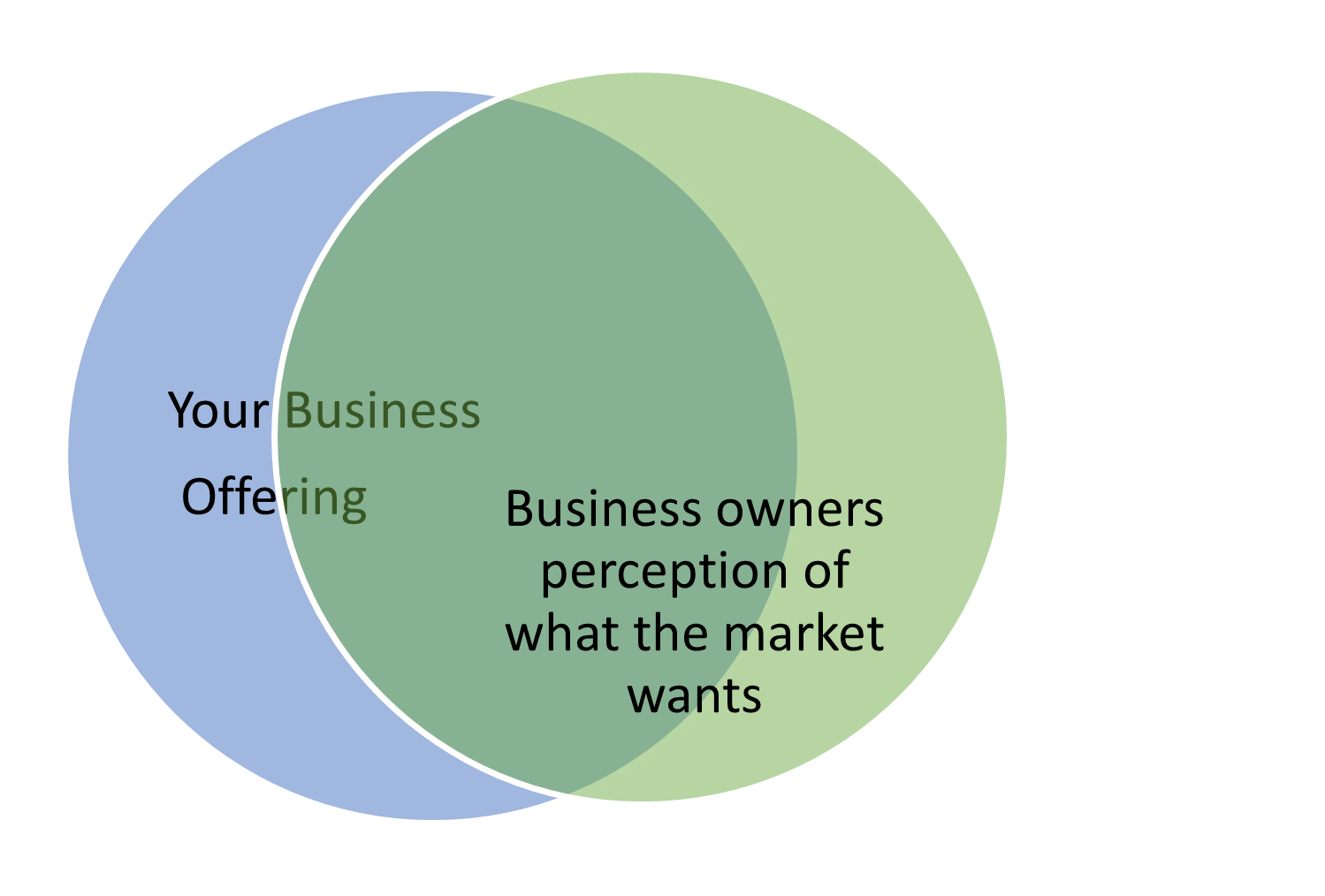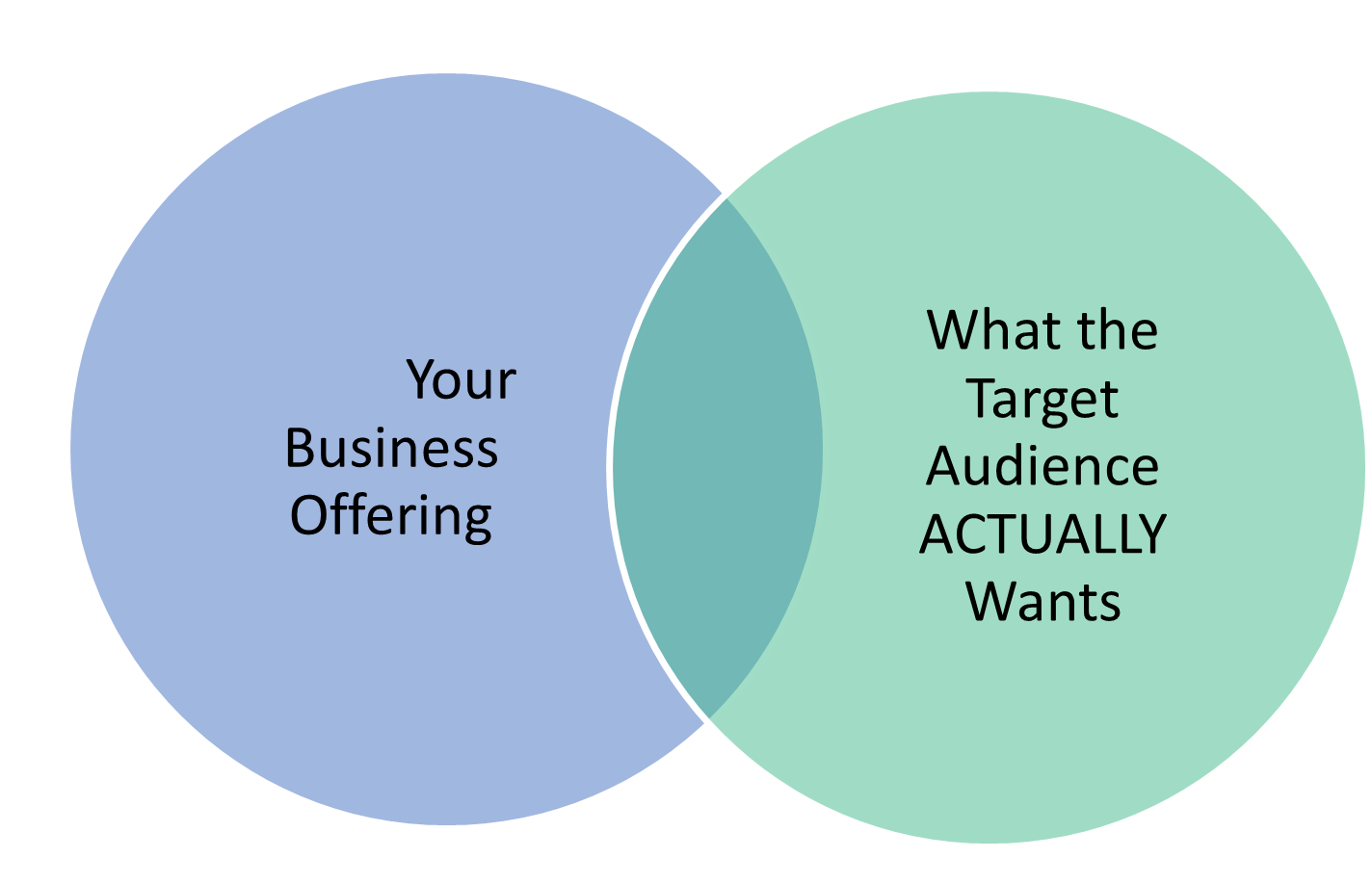The importance of understanding your target audience is so often underestimated by small business owners. In fact, often small business owners can be guilty of focusing on what they want to do or what they think their target audience wants, rather than what the market actually wants.
Consider the situation as a Venn diagram (see below) with one circle representing what the business offers and the other representing what the target audience wants. The greater the intersection, the more successful a business is likely to be (ignoring other factors such as pricing and competition).
What most business owners likely perceive:
The actual situation often is more likely this:
It is important first to understand the true situation and then align the business with what the market ACTUALLY wants (ie the blue circle moves to the right), to increase the likelihood of sales.
A key reason why businesses may not be performing as well as their owners would like, is the business is not offering enough of what the market wants. The better that you understand your target audience, the greater your ability to cater to their needs.
What the business offers and what the market wants will not always overlap 100% for a number of reasons including the business targeting more than one market and strategic reasons.
As a small business owner, you have to ask yourself, how well do you really know what your target audience wants. You may think you know what they want, but do you really? What have you done to ascertain what they are thinking? If you don’t have it right, it could cost you dearly.
Recently I interviewed the owner of a press release company who recounted an experience which demonstrated to him that he had misjudged his target audience. The service he was offering had met with a lot of demand, but the number of repeat customers was low. He decided to work on this issue and design an on-boarding process. As part of on-boarding, he decided to send new customers along with a book on how to get the most out of P.R., a package of gifts, including fun but unrelated items to what they do.
At considerable expense he sent out the free gifts, until one day he was speaking to a client who referred to the gifts as unprofessional. This feedback stopped him in his tracks; this was the last reaction that he had wanted. Was this a one-off comment or was it a fair representation of the market? To the business owners’ credit, he decided to run a test and randomly separated new clients into two groups, those that would get the fun package and those that would get the standard package including the book. After trialing for 6 months, the evidence was conclusive, clients were more likely to become repeat customers with the standard package than those that got the fun package.
The lesson in this? As much as the business owner personally thought the package was fun and would be appreciated by his clients, it wasn’t. He was swayed by his own personal preferences and his perception of his clients rather than the reality. This business owner became aware of the issue and resolved it, so his business is benefitting.
How many businesses are under performing because they don’t totally understand their target audience and therefore are not giving them exactly what they want? It is not just about the product or service you offer; it includes all your interactions. In this example he was offering the right service, it was the interactions that were letting him down!
Totally understanding your target audience is important. It might take a bit of effort, but your business will thrive from it!


